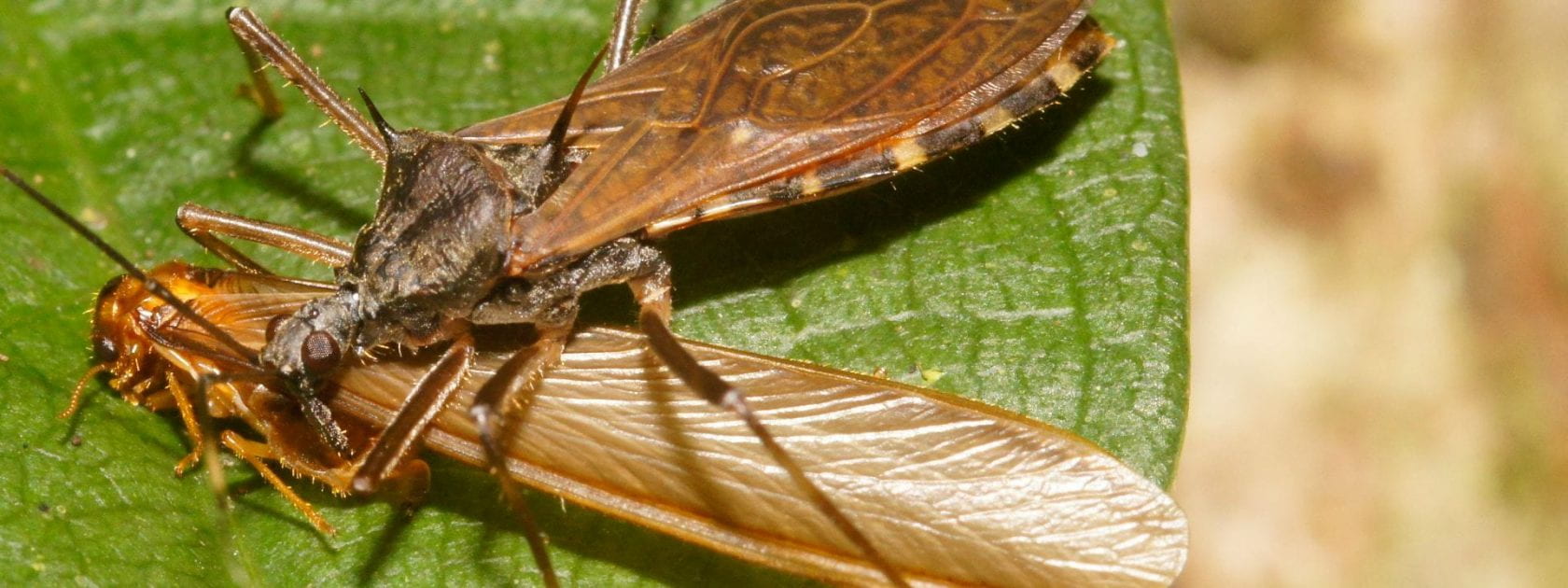The University of Guelph Insect Collection can be found in the Edmund C. Bovey Building, located on the northwest corner of Gordon Street and South Ring Road (see Google Maps). Please contact either the collection director or curator regarding inquiries about our holdings, requests for loans, or to arrange visits to study material.
Collection Director: Dr. Stephen A. Marshall
Collection Curator: Dr. Steven M. Paiero
Mailing Address:
University of Guelph Insect Collection
School Of Environmental Sciences (Bovey Building)
University of Guelph
50 Stone Road East
Guelph, Ontario
N1G 2W1
Phone
519-824-4120 ext. 52582 (Insect Collection/Dr. Steve Paiero)
Insect Identification Assistance:
Personnel associated with the Insect Collection have been very active in providing insect identification resources including books, papers and interactive online guides in the Canadian Journal of Arthropod Identification (CJAI). We do not provide a formal identification service, but we often offer casual help with requests to identify insects that have been found in and around homes and businesses, and colleagues from the University of Guelph and other institutions frequently use the specimens in the Collection to help with species identifications. Please, before contacting us, consider using online resources, such as Bugguide.net, CJAI, or field guides before contacting us. For formal identification requests, especially for insect species not easily identified with resources such as CJAI or BugGuide.net, we suggest the National Identification Service.
Inquiries on the Asian Giant Hornet
For concerns or inquiries about Asian Giant Hornets in Ontario, please visit the Ontario Government page here, which details how to report potential occurrences in Ontario. We are assisting OMAFRA with the identifications, but submissions should be made through their portal.
Depositing Voucher Material
Vouchering insect specimens from your study is an important part of ensuring your work can be critically examined and validated. This applies to both faunistic studies, where hundreds or even thousands of species are encountered, and lab studies, where a handful of species may be under study. Having specimens available for study can allow re-examination of material to ensure that species being discussed in a manuscript are indeed the species on hand. Species concepts may change, available taxonomic keys may not sufficiently resolve species present, and experience in using different keys can vary, so mistakes in identification can happen.
Depositing specimens at an established publicly accessible institution enables other researchers to access them as, too often, private research collections are discarded or destroyed. It also encourages researchers to ensure their identifications are as accurate as possible and, potentially, compare it with identified material already at the collection. The University of Guelph Insect Collection accepts voucher material that will be accessible to other researchers but it is important that you reach out to the curator to discuss your study. For a variety of reasons, six specimens per species is usually suggested/accepted. Additional material may be taken to aid in teaching courses and outreach efforts. This small series of specimens allows several individuals, ideally from both sexes, to be available for study and to examine potential discrepancies in the identifications.
For a recent discussion of this issue, check out Packer et al.’s (2018) discussion. For additional discussion, check out the Biological Survey Of Canada‘s discussion on terrestrial arthropod surveys.


